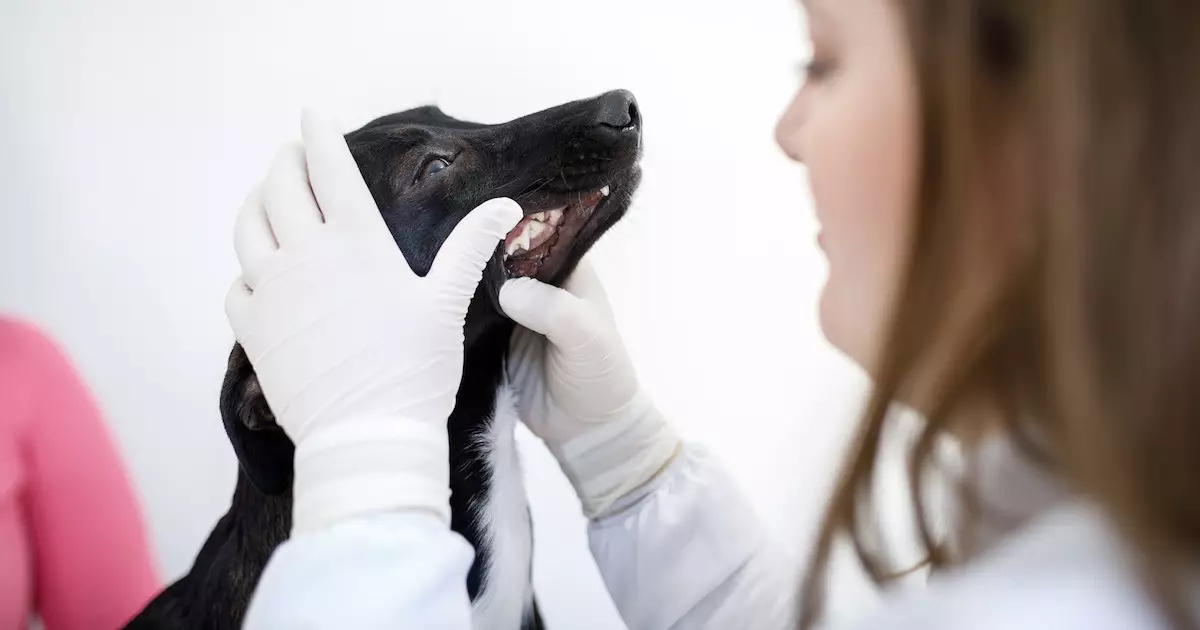Persistent deciduous teeth are a condition wherein a dog’s adult teeth emerge before the baby teeth have fallen out. This dental anomaly, sometimes referred to as persistent baby teeth, can have several implications for a dog’s oral health and overall well-being. Typically, dogs begin to lose their baby teeth around the age of three months, with a full set of 28 baby teeth being replaced by 42 permanent adult teeth. Understanding this condition is crucial for pet owners, particularly those with breeds that are more susceptible to dental issues.
Dogs experiencing persistent deciduous teeth can manifest various symptoms, primarily affecting their oral cavity. If a dog retains its baby teeth after the emergence of adult counterparts, several oral health issues may arise. Common indicators include:
– Overbite and Jaw Misalignment: The presence of both baby and adult teeth can lead to misalignment, resulting in an overbite that affects the dog’s bite and chewing efficiency.
– Gingivitis and Periodontal Disease: Inflammation of the gums, particularly gingivitis, can occur as a result of overcrowded teeth, leading to potential periodontal disease.
– Difficulty Eating: A dog may struggle to eat or exhibit signs of discomfort while chewing, stemming from the irritation caused by overlapping teeth.
– Tooth Decay and Cavities: Retained baby teeth can trap food particles, increasing the risk of decay and cavities, as well as resulting in pus accumulation.
– Pain and Infection: The condition can lead to significant pain for the dog, along with potential infections in the oral region if not treated promptly.
The primary cause of this dental condition is the failure of baby teeth to naturally fall out as adult teeth emerge, a process usually occurring between 14 and 30 weeks of age. Factors such as genetics may play a role, particularly in small and brachycephalic breeds, like Poodles, Yorkshire Terriers, and Pugs. These breeds have anatomical features that may contribute to the likelihood of persistent teeth.
If you suspect that your dog may have persistent deciduous teeth, it is crucial to consult a veterinarian. A comprehensive oral examination is necessary, which may be supplemented by X-rays to ascertain the condition of the teeth beneath the gum line. This evaluation can help determine whether any dental issues have developed as a consequence of the persistent teeth.
Once diagnosed, treatment for persistent baby teeth typically involves the extraction of the non-erupted baby teeth. This procedure may require general anesthesia, as it is essential to ensure the dog’s comfort and safety during the extraction process. In cases where an overbite or jaw alignment issues arise due to this condition, additional teeth may need to be removed.
Recovery from tooth extraction can take several weeks, during which dietary modifications may be necessary. Occasionally, a dog may require a temporary feeding tube if eating becomes challenging due to post-operative discomfort.
Preventing persistent deciduous teeth largely hinges on early detection and regular oral care. Pet owners should conduct weekly mouth inspections and maintain a consistent dental hygiene routine through regular brushing. Such proactive measures can help identify potential issues before they escalate.
Understanding persistent deciduous teeth in dogs is vital for maintaining their oral health. By recognizing symptoms early, seeking veterinary care, and adhering to proper dental hygiene practices, pet owners can ensure their dogs enjoy a healthy and pain-free mouth. Regular checks and timely interventions are critical to combating this common dental condition effectively.

